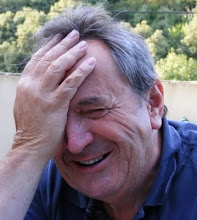This is Sir David Wilkie's portrait of William Chalmers-Bethune, his wife Isabella Morison and their Daughter Isabella. It was painted in oils in 1804. It is not intended to be a flattering portrait. It is an accurate record of how Wilkie saw that little family. The sheer skill is obvious. And to those of us who have been taught to actually look at paintings, the insights into the people portrayed are richer and deeper than any photograph could convey.
And this is John Byrne's 2007 portrait of his partner Tilda Swinton, executed in chalks. And the same comment applies. It tells you far more about the Actress than any photograph could. The technique is completely different apart from one thing. Both Artists, separated by 200 years, have looked and looked and looked at their subject; have interacted with their subject, and have put their insights down on canvas or paper. Wilkie's must have taken months to complete; John Byrne's perhaps much less time. But they are both the result of an applied art, craft or skill, call it what you will, which values intelligent, thoughtful analysis over cheap sensation.
It was a brilliant programme, and offered a vision of Art so far removed from Saatchi-World that it could have been a different planet.



No comments:
Post a Comment